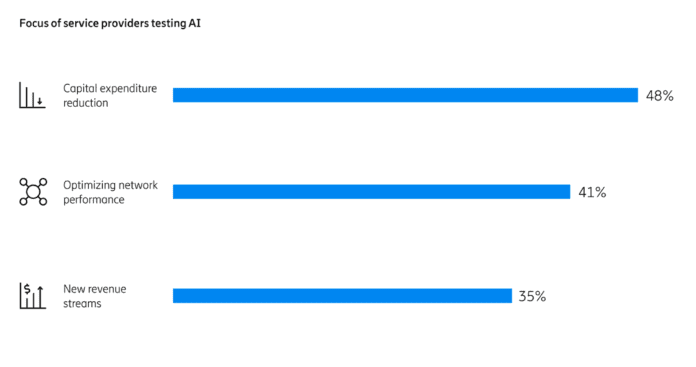Make the switch to 5G easy by adopting artificial intelligence in your networks
As 5G networks are lit up in urban cores and devices begin to hit the market, consumers are already seeing upward of 1 Gbps per second over the air. AND that’s just the beginning. In addition to enhanced mobile broadband, 5G supports the internet of things at a scale unthinkable until recently–up to 1 million devices per square kilometer. And as we move from 3GPP Release 15 onto Release 16, enhancements that will support ultra-reliable low latency communications applications like precision robotics and remote industrial control will drive transformation in virtually every sector of the economy.
But while that’s easy to say, it’s much more difficult to do. In addition to the requisite upgrades in radio, edge, transport, core and cloud infrastructure, service providers need to bring intelligence in their networks to bear to appropriately manage the massive increase in complexity that will come with billions of IoT devices, a multitude of new services and real-time responsiveness.
As a machine learning scientist from the APAC region put it, “There has been an increased complexity in the management of a vast number of devices and huge data. AI and ML will help to reduce this complexity.”
Before digging into how AI and machine learning are being used to enhance mobile networks, let’s examine the difference between the two related but distinct terms. Machine learning is a subset of AI and refers to ongoing data collection and pattern analysis wherein a software system essentially learns from experience and improves over time. AI is a broad field of study that, to be clear, has not yet reached the point where machines exhibit human-like intelligence. In practice today the two terms are closely aligned; AI builds on ML by taking data insight and initiating an action.
The use of AI in mobile networks isn’t an aspirational endeavor set for a nebulous time in the future–operators are testing AI today for a number of use cases that create value for both the service provider and the customer. In fact, according to recently published research based on conversations with executives at 132 mobile operators around the world, 53 percent of carriers expect to be using AI in their networks by the end of next year.

Taking a closer look, it’s apparent that operators see clear value in taking an automated, analytics-based approach to improving network operations and performance. Ericsson’s research finds that nearly half of the companies surveyed are currently testing AI with an eye on capex reduction while between 28 percent and 41 percent are exploring the use of AI for boosting reliability, cutting opex, creating bespoke customer interactions and opening up new sources of revenue.

While much of the 5G discussion is focused on higher throughput and lower latency, there’s also significant improvements to network reliability and availability. In the context of mission critical communications, AI can be used to proactively identify and correct network issues that could, for instance, result in downtime on a factory floor (and lost revenue) if not correctly managed.
As operators invest in the infrastructure to provide a whole new generation of mobile experiences, capacity planning and management is another operational process that can benefit from intelligent automation. Historic and real-time network usage data can be analyzed to ensure users have the spectral and network resources they need when and where they need them. The same premise can be applied to network planning as service providers look to optimize the allocation of precious capital dollars.
 Senior Global Marketing Manager Mohit Malhan, who heads AI and ML marketing for Ericsson, said, “We see many operators are speeding up their journey to 5G. 5G will enable many different use cases and will bring millions of new IoT devices to the market. Complexities and operational workload will become so large that they can’t be managed by people alone, pushing the need for automation and machine learning.”
Senior Global Marketing Manager Mohit Malhan, who heads AI and ML marketing for Ericsson, said, “We see many operators are speeding up their journey to 5G. 5G will enable many different use cases and will bring millions of new IoT devices to the market. Complexities and operational workload will become so large that they can’t be managed by people alone, pushing the need for automation and machine learning.”
He continued: “This is the core reason why artificial intelligence will play a pivotal role in helping manage OPEX and reduce CAPEX.”
In terms of the benefits a sound AI strategy can enable, that’s just the tip of the iceberg. Internal processes like alarm management, network optimization, configuration and healing, and infrastructure modeling can all be streamlined. Customer-facing benefits, aside from an overall improved network experience, include enhanced customer service experiences with virtual assistants, for example. But successfully implementing an AI strategy is not without challenges, chief among them standardization of interfaces so that data from a multiplicity of sources can be collected, structured and analyzed in a meaningful way.
For a closer look at how AI and ML can help service providers on their journey to 5G, read “Employing AI techniques to enhance returns on 5G network investments.”

